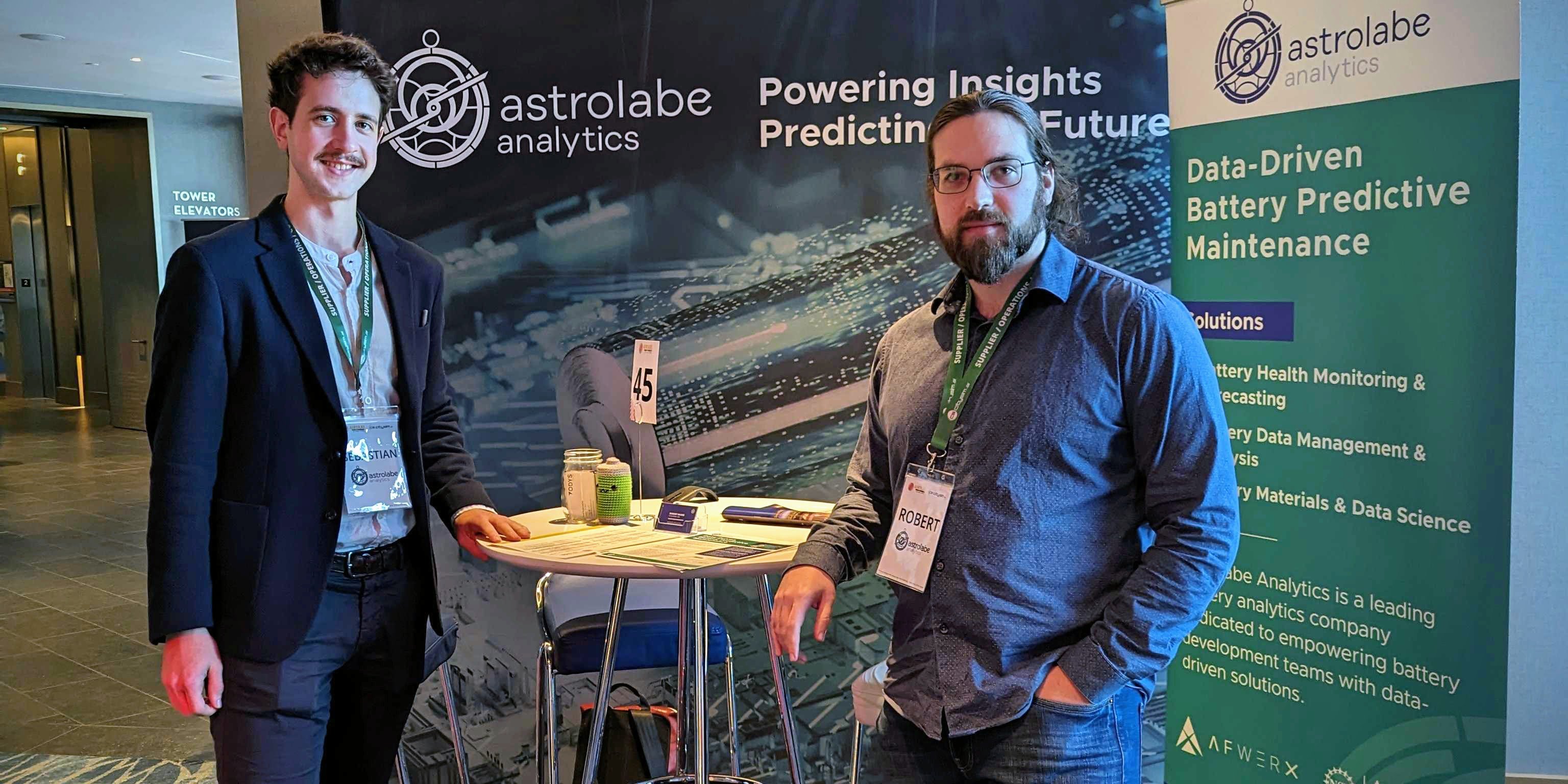Click Here to View This Page on Production Frontend
Click Here to Export Node Content
Click Here to View Printer-Friendly Version (Raw Backend)
Note: front-end display has links to styled print versions.
Content Node ID: 420263
Much like the lithium-ion batteries that power our smartphones, the batteries that will power electric aircraft are destined to degrade over time. For smartphone users, battery performance issues after a few years of use might indicate that it’s time to replace your device. But for electric aircraft operators, deciding when to replace aging batteries is a far more convoluted task—one that will require regulatory oversight due to the safety-critical nature of aviation.
To help eVTOL developers and air safety regulators analyze and predict aircraft battery performance, Seattle-based start-up Astrolabe Analytics is developing a software system that combines data management techniques with artificial intelligence (AI) and machine learning. It uses voltage data supplied by an aircraft’s onboard battery management system to analyze each battery pack’s performance down to a cell level, allowing operators to identify weak cells before they begin to compromise the battery’s performance and safety.
The secret sauce in Astrolabe’s patent-pending system is a set of algorithms that identify outliers in voltage data features and then use computer models to predict how a battery will perform over time. This enables early detection and prevention of battery failures. Conversely, the algorithms might indicate that a battery is outperforming expectations and doesn’t need to be replaced simply because it has hit a somewhat subjectively determined expiration date, Astrolabe founder and CEO Robert Masse told AIN. Battery developers and manufacturers could also use this data for warranty assurance and quality control purposes, he said.
Astrolabe claims its software can analyze a battery’s voltage profile to pinpoint weak cells using less than five minutes’ worth of flight data, whereas other methods require upwards of 30 minutes. It only takes a few seconds for the program to analyze the data and generate a battery health report. This can reduce overall operating costs for developers and operators of electric vehicles as well as battery manufacturers. It could also help to accelerate the development of new types of batteries, including alternative chemistries to traditional lithium-ion batteries, as well as ground-based energy storage systems.
The Astrolabe team has already validated its weak cell identification system using flight test data from two electric aircraft whose batteries came from different manufacturers. They found that the algorithm identified weak cells with 85 percent accuracy during those initial tests, and they expect to improve that accuracy to 95 percent after implementing some changes to account for errors identified during the analysis.
When the company brings a commercial product to market, it will be in the form of a software platform that integrates with existing fleet management systems to help operators monitor and predict battery health, Masse said. For now, it is offering custom consulting services for just about anything related to aircraft batteries, including battery materials development, quality control, supplier selection, end-of-life forecasting, predictive maintenance, and certification.
The work that Astrolabe is doing could be especially helpful for the development of new standards and regulations in the burgeoning electric aviation industry, with several new eVTOL aircraft expected to be certified and in commercial service by 2025. Likewise, Astrolabe’s software could provide the industry with a tool that companies can use to ensure they are complying with any and all regulations. But when it comes to monitoring battery health and replacing aging batteries in new electric aircraft, “there are no hard and fast rules right now,” Masse said. “It’s like the wild west.”
Funding for Astrolabe’s work has mostly come from government grants and small business innovation research (SBIR) contracts. It has so far raised about $2.3 million from NASA, the National Science Foundation, and the U.S. Air Force’s Afwerx program. Astrolabe has done some collaborative R&D projects with MagniX, a local company developing electric motors for aircraft, as well as Beta Technologies, a Vermont-based developer of electric air taxis and charging stations. Masse said Astrolabe is also working with a light-sport-category electric aircraft developer. Although the company has been primarily focused on the eVTOL sector, its technology “could work with any design as long as there's a battery in there somewhere,” he said.
